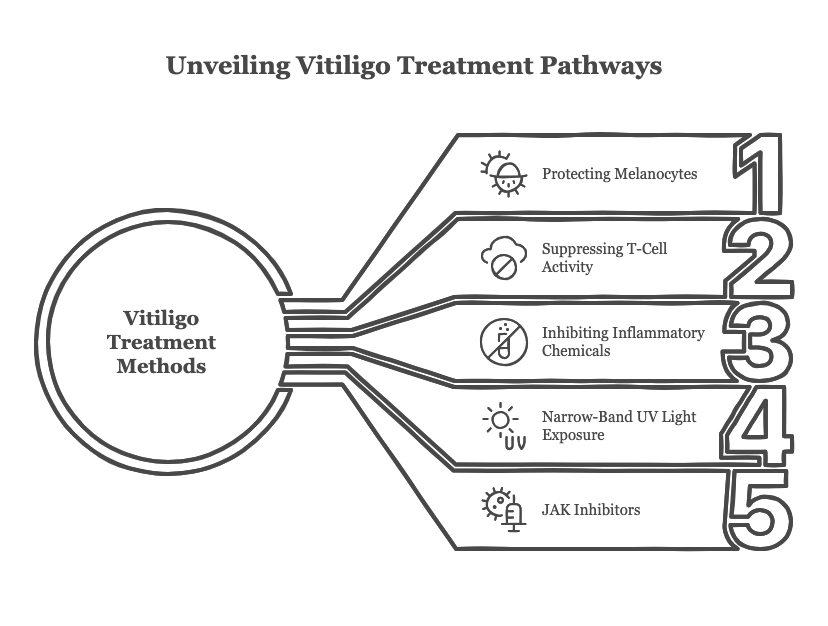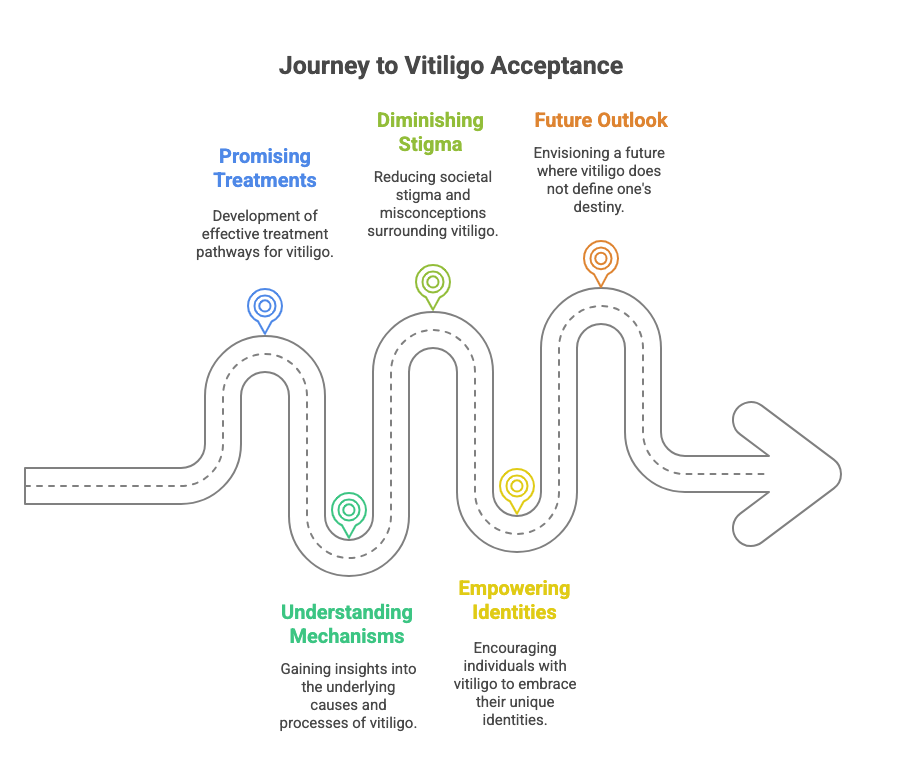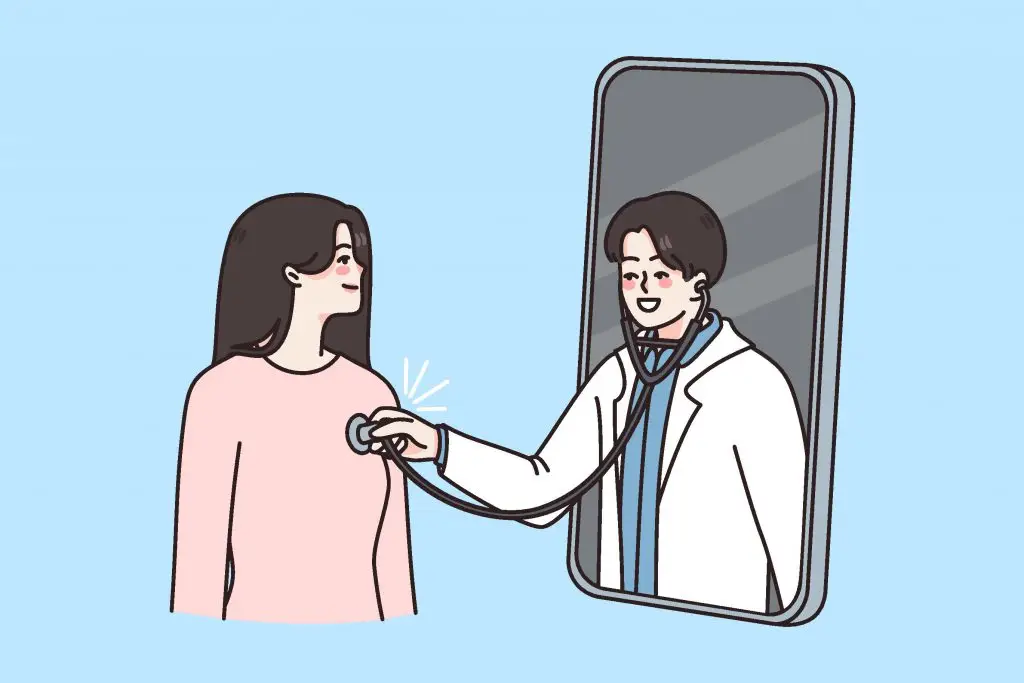Key Highlights
- Vitiligo is a skin disease caused by the loss of pigment, resulting in pale white patches on the skin, affecting individuals physically and emotionally.
- Common myths around vitiligo include stigmas and misconceptions that compound its psychosocial impact.
- The causes of vitiligo are multifaceted, often involving autoimmune triggers, genetics, and environmental factors.
- Personal stories highlight the psychological effects of vitiligo on identity and quality of life, showcasing resilience in the face of challenges.
- Mental health resources and education are essential for better management and self-acceptance in vitiligo patients.
- Community support plays a significant role in reducing stigma and improving the overall quality of life for those with vitiligo.
- Vitiligo, an autoimmune disorder, impacts millions of lives worldwide. It’s more than a skin condition; it affects personal identity and confidence, leading to significant emotional and social challenges. Through ongoing research, promising breakthroughs are being made, offering hope for effective treatments and a better understanding of this condition.

Introduction: A Personal Journey
Imagine the life of a young girl, whose world turns upside down at the tender age of nine. It was then that her mother noticed white spots appearing on her daughter’s face and neck, sparking a journey of concern and future projections. This initial diagnosis is more profound than the discoloration of skin; it’s about navigating life with an altered sense of self.
Understanding Vitiligo
Vitiligo results from the immune system attacking melanocytes, the cells responsible for skin pigmentation. The condition is more noticeable in individuals with darker skin which can lead to cultural and societal pressures. Alarmingly, it affects one in 100 children and about 0.5 to 2% of the global population.

Causes and Disease Mechanism
The destruction of melanocytes results in the characteristic white patches of vitiligo. This autoimmune process involves T-cell lymphocytes causing inflammation. As a result, lives are altered, as individuals face identity struggles amid cultural expectations.
Innovative Treatment Approaches
In recent years, research has advanced treatment methods for vitiligo. New possibilities focus on three main areas: protecting melanocytes, suppressing T-cell activity, and inhibiting the inflammatory chemicals. Techniques like narrow-band UV light exposure and JAK inhibitors are at the forefront, offering renewed hope for patients.

Research and Breakthroughs
Recent breakthroughs have introduced JAK inhibitors, available as creams and oral pills, revolutionizing treatment by stabilizing the immune response and preventing further melanocyte destruction. With combined strategies, they offer effective solutions for those living with vitiligo.
Diet and Lifestyle Factors
The role of diet and lifestyle is integral to managing vitiligo. A diet high in antioxidants, such as berries and green vegetables, alongside vitamins and minerals like vitamin B12 and zinc, proves beneficial. While research continues, these dietary choices support overall health and immune function.

Technology and AI in Monitoring
Advancements in artificial intelligence have significantly improved the monitoring of vitiligo. AI-driven applications now allow for earlier detection of patch changes than the human eye, facilitating timely interventions and paving the way for future research and treatment developments.
Future Outlook
Once considered untreatable, vitiligo now has multiple promising treatment pathways, with skin transplant techniques improving outcomes for many. Understanding this complex disorder’s underlying mechanisms has closed the loop on knowledge gaps, fuelling optimism for even more effective solutions on the horizon.
As research progresses, the stigma surrounding vitiligo will diminish, empowering those affected to embrace their unique identities. By raising awareness and supporting innovation, we can strive for a future where vitiligo is no longer a condition that shapes one’s destiny. Thank you for reading, and be sure to subscribe to our channel, Kundlas MD, for more insights into autoimmune conditions and emerging treatments.

Frequently Asked Questions
Is vitiligo contagious or hereditary?
Vitiligo is a skin disease, but it does not spread from person to person. It is not something that you can catch from others. The condition happens when the immune system starts to attack the cells that make pigment in the skin. While there may be a link to family history, a dermatologist will tell you that vitiligo is not certain to pass down to others in your family. Remember, vitiligo is a skin disease. There is no need to fear it or see it the wrong way.
Are there effective treatments for vitiligo?
The management of vitiligo is getting better over time. Treatments like topical JAK inhibitors show that they may help. Dermatologists say that it is important to be patient, because the pigment can come back at different rates depending on the area of skin you have. You can use places like Google Scholar to learn more about the best ways to improve the quality of life and help bring pigment back in people with vitiligo.
How can I support a friend or family member with vitiligo?
Support always starts when you understand the psychosocial impact of vitiligo. You need to be kind and help fight the stigma by spreading education. When people with vitiligo experience good social interactions, they can become more resilient and their mental health can be better. If you encourage open talk, it helps to make it easier for those facing these tough feelings and challenges.
Can vitiligo affect other aspects of health?
Vitiligo is mainly a skin disease recognized in publications like J Am Acad Dermatol, but it can have big effects on how people feel. It does not cause psoriasis, but the patches of skin it makes will get a lot of looks from others. Dermatologists say that you have to watch out for both your mental and physical health when you deal with vitiligo.
What role does community play in self-acceptance for people with vitiligo?
Communities that help people with vitiligo can make their quality of life better. They do this by helping people be strong and by lowering the stigma. When people share their own stories, it helps them accept themselves. It also helps with their mental health, particularly in social situations. When you join support groups, this can help you grow inside. It can also help you care more for others.


